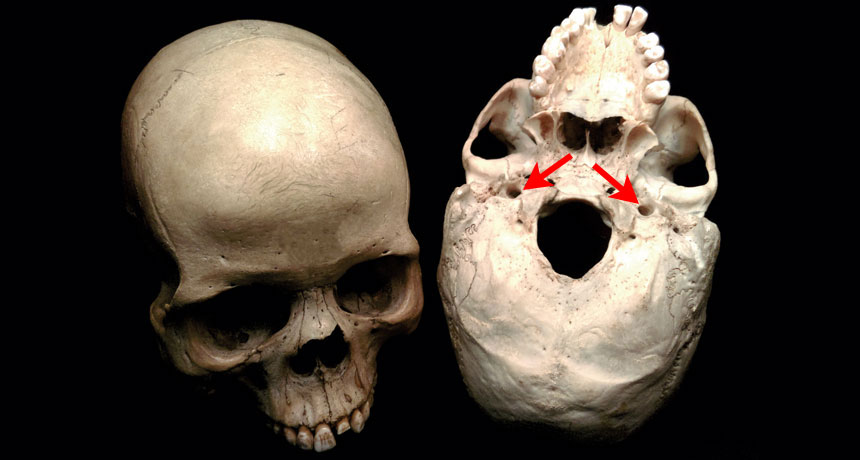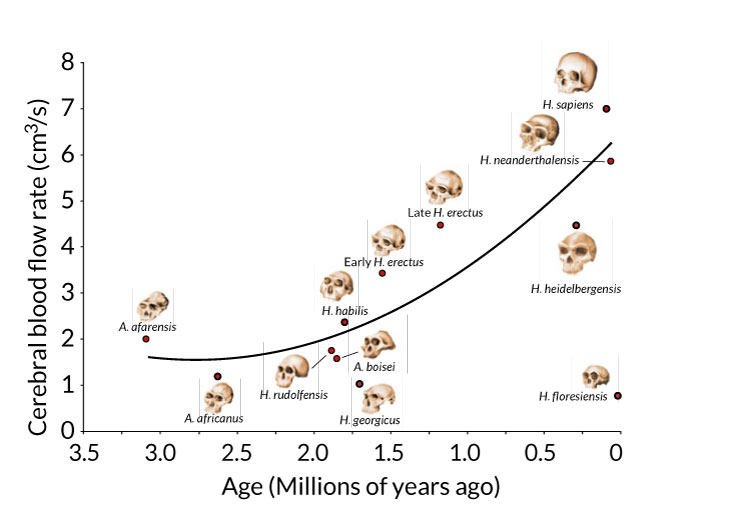Brain’s blood appetite grew faster than its size
Evolution of hominid mental abilities demanded more fuel, study finds

BLOOD FLOW The internal carotid arteries pass into the skull through two tiny holes (shown with arrows on this human skull). Scientists measured these openings in hominid fossils to estimate changes in blood flow rates to the brain across human evolution.
Edward Snelling








